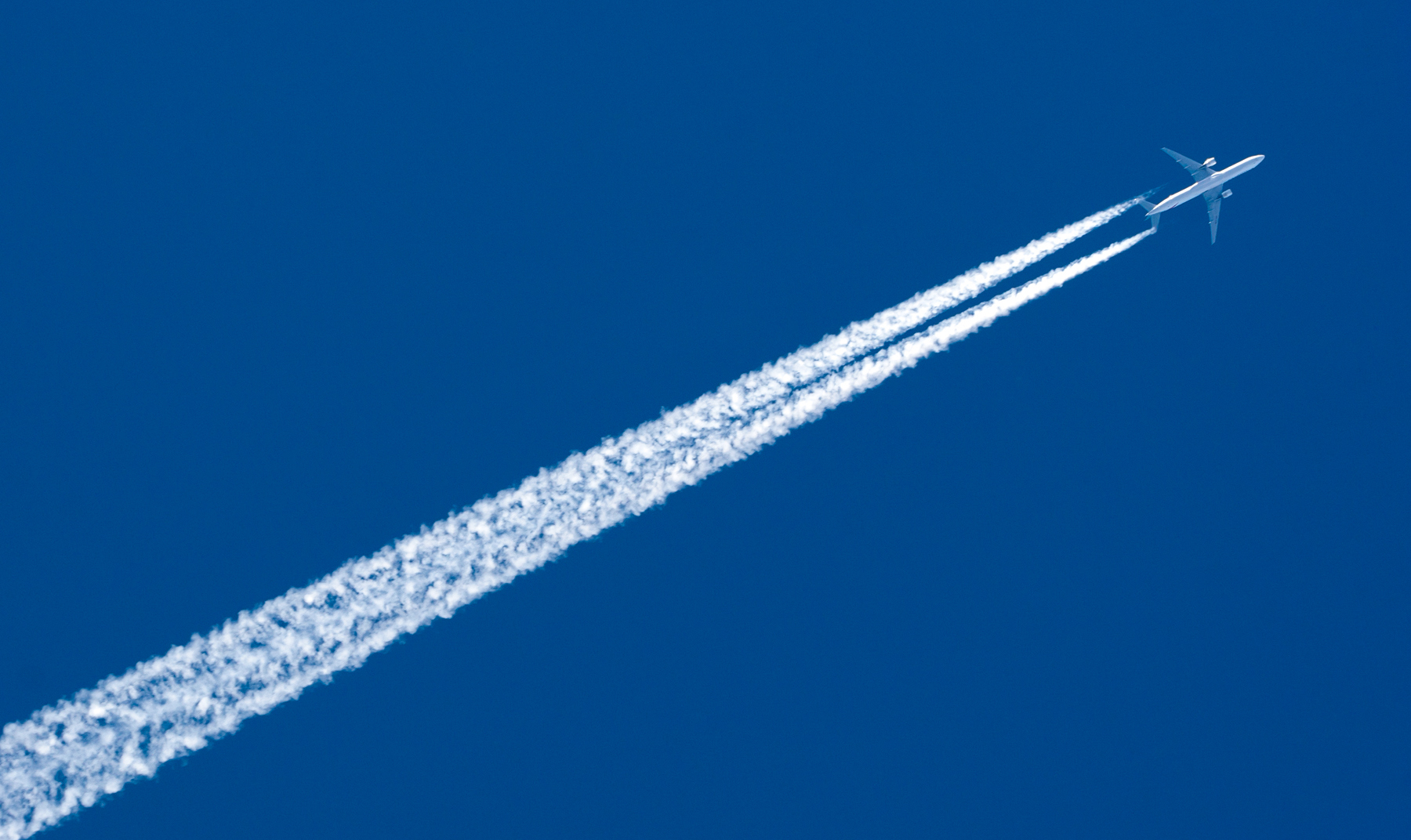Google AI combats contrails to reduce global warming
Big Tech is working on artificial intelligence (AI) that could help the airline industry reduce its impact on climate change by preventing condensation tails, or contrails.
What is a contrail?
Have you ever seen an aeroplane flying through the sky on a sunny day leaving a long, thin line of cloud in its wake? That line of cloud is called a condensation trail, more commonly referred to as a 'contrail'.
Aircraft contrails form when water vapour and small particles emitted by a jet engine mix into the surrounding atmosphere and produce a trail of cloud made of tiny ice crystals.
The reason we don’t see contrails in the sky every day is because they require a unique combination of pressure and temperature to develop at the flight level. The chart below shows which variations of pressure and temperature are necessary for contrails to form.

Image: Appleman Chart showing how pressure and temperature interact to create contrails above the 500 hPa level in the atmosphere. Source: NASA
While a single contrail doesn’t cover much of the sky, they can linger and spread out to form broader layers of cirrus cloud over time, when conditions are just right.
The combined effect of the contrails and cirrus cloud produced by the entire global aviation industry is so large that it makes a sizable contribution to the global warming that underpins climate change.
According to the Intergovernmental Panel on Climate Change (IPCC), “global transport was the fourth largest source of greenhouse gas emissions in 2019,” with international aviation making up around 7% of the transport sector’s emissions.
The International Air Transport Association (IATA) estimates that around 46.8 million commercial flights were scheduled around the world in 2019, prior to the COVID-19 pandemic. This is more than 100,000 flights per day, on average.
These aircraft contribute to climate change in two main ways:
- Through CO2 emissions caused by the combustion of fossil fuel
- Via non-CO2 emissions, including water vapour and soot that create contrails
Recent research suggests that contrails and the lingering cirrus clouds they produce accounted for about 57 percent of the warming caused by the aviation industry between 2000 and 2018. Taking away these contrails would help limit future global warming.

Big Tech steps in
To help curb the warming impact of contrails, tech giant Google has developed an AI-driven tool that can produce contrail forecast maps to help airlines avoid areas of the atmosphere that are conducive to contrails.
Google claims that a trial of the new technology on 70 test flights over a six-month period found that pilots were able to reduce contrails by 54 percent.
While changing flight paths to prevent contrails did require aircraft to burn more fuel during the trial, Google claims that the reduction in warming caused by avoiding contrails is greater than the additional warming caused by the extra fuel consumption.
You can read more about Google’s new AI-driven contrail forecast tool here.